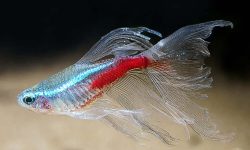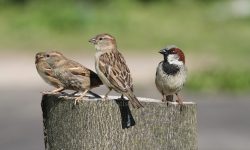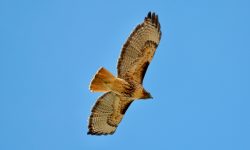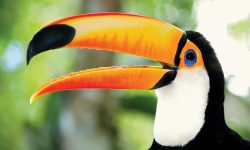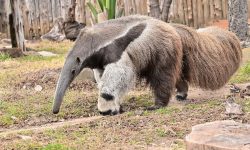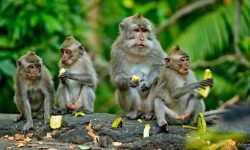The annual migration of ducks ranks among the greatest endurance feats in the animal kingdom. Traveling thousands of miles twice a year, ducks connect ecosystems across hemispheres—from Arctic tundra to tropical coasts—with precision, resilience, and astonishing biological efficiency. But what drives this journey, and how do they accomplish it? To answer that, we must explore the routes, behaviors, and evolutionary adaptations that define duck migration.

Why Do Ducks Migrate? A Biological Imperative
Migration is not a choice—it is a survival mechanism evolved over millions of years. Seasonal environments create a boom-and-bust cycle for food and nesting conditions. Ducks migrate to:
-
Exploit abundant summer resources in northern regions: long daylight hours, rich insect life, and low predator density create ideal breeding conditions.
-
Escape harsh winters in northern latitudes where wetlands freeze and food becomes inaccessible.
-
Minimize interspecific competition by staggering use of resources between seasons and locations.
From a physiological standpoint, ducks have evolved to synchronize hormonal changes with environmental cues like day length, temperature, and food availability—initiating a cascade of behavioral shifts that prepare them for long flights.
The Four Great Flyways: Aerial Superhighways of Waterfowl
Migration in North America is structured along four primary flyways. These are not rigid corridors but rather geographic zones with overlapping stopovers that ducks have followed for millennia.
Pacific Flyway: From Alaska to Central America
-
Geography: Follows the western coast from Alaska through California and down into Mexico and Central America.
-
Key habitats: Klamath Basin, Central Valley (California), Salton Sea, and Baja wetlands.
-
Species focus: Northern Pintail, Green-winged Teal, American Wigeon.
Ecological insight: The Central Valley of California supports over 60% of Pacific Flyway waterfowl in winter, but over 90% of historic wetlands have been lost. Today, flooded rice fields serve as substitute habitat, showing how agriculture and conservation intersect.
Central Flyway: Through the Heart of the Continent
-
Geography: Stretches from prairie Canada through the Great Plains to the Gulf Coast.
-
Key staging areas: Prairie Pothole Region, Platte River Basin, Texas Panhandle playas.
-
Species focus: Blue-winged Teal, Gadwall, Northern Shoveler.
Notable challenge: Climate change is shifting rainfall patterns in prairie regions, threatening the productivity of vital breeding grounds. Declining snowmelt and groundwater affect wetland longevity, which directly impacts duck reproductive success.
Mississippi Flyway: The Continental Bottleneck
-
Geography: From the Great Lakes to the Mississippi Delta and Gulf Coast.
-
Core stopovers: Upper Mississippi River refuges, Illinois River Valley, Arkansas Delta.
-
Species focus: Mallard, Wood Duck, Canvasback, American Black Duck.
Ecological detail: The Mississippi River’s wetlands provide both navigation and nutrition. Ducks rely on submerged aquatic vegetation and invertebrates in river backwaters to refuel. Conversion of bottomland hardwood forests to agriculture has caused major habitat fragmentation.
Atlantic Flyway: Eastern Coastal Passage
-
Geography: From eastern Canada down the U.S. Atlantic Coast into the Caribbean.
-
Important locations: Chesapeake Bay, Cape Cod, Cape Hatteras, Everglades.
-
Species focus: American Black Duck, Bufflehead, Ring-necked Duck.
Habitat pressure: Sea level rise and coastal development threaten tidal marshes and estuarine ecosystems. Chesapeake Bay’s degradation has been especially harmful to diving ducks that rely on underwater vegetation.
Navigational Mastery: How Ducks Find Their Way Across Continents
Multi-modal navigation
Ducks rely on redundant systems of orientation that allow for both large-scale and fine-tuned movement:
-
Celestial cues: Sun angle during the day and star positions at night help maintain general direction.
-
Earth’s magnetic field: Ducks have magnetoreceptors in the beak or brain that act as an internal compass.
-
Landmark recognition: River systems, mountain ranges, and coastlines are memorized over generations.
-
Olfactory and auditory maps: Some studies suggest ducks use smell and soundscapes (e.g., river noise, wind patterns) to confirm locations.
Genetic vs. learned behavior
Migration is partly innate and partly learned. Young ducks imprint on their natal routes by following older birds. However, satellite tracking has shown that some first-year birds deviate from traditional paths and establish new migratory traditions, especially when climate or habitat changes force adaptation.
Species Spotlight: Extreme Journeys in Detail
Blue-winged Teal
-
Distance: 4,000+ miles to South America.
-
Migration style: Early departure in late summer; non-stop flights over Gulf of Mexico.
-
Challenge: Requires high fat stores and precise timing to avoid tropical storms during transoceanic segments.
Northern Pintail
-
Range: Breeds in Arctic and subarctic; winters in southern U.S., Mexico, and Caribbean.
-
Migration innovation: Uses “staging areas” like the Central Valley to gradually build energy reserves before continuing.
Mallard
-
Plasticity: Highly adaptable; some populations migrate, others remain resident in urban areas.
-
Evolutionary advantage: Flexibility in food source and nesting site allows rapid colonization of artificial habitats.
Canvasback
-
Route specialization: Follows narrow corridor into Chesapeake Bay and Mississippi Alluvial Valley.
-
Ecological dependence: Requires healthy submerged aquatic vegetation (SAV); declines in SAV impact survival and reproduction.
Obstacles on the Wing: What Ducks Face in the Modern World
Habitat degradation at scale
-
Wetland drainage in breeding grounds reduces nesting success.
-
Urban encroachment displaces migratory stopovers.
-
Agricultural runoff causes eutrophication and reduces aquatic food quality.
Climate instability and phenological mismatches
Rising global temperatures alter migration timing. Early springs may lead to:
-
Ducks arriving before wetlands thaw in the north.
-
Insects hatching earlier than ducklings, leaving less food during brooding.
This mismatch reduces chick survival and reproductive output.
Hunting mortality
Although heavily regulated, hunting still removes millions of ducks annually. The key to sustainability is ensuring:
-
Harvest aligns with population trends.
-
Critical rest periods and no-hunt zones exist in staging areas.
Emerging disease threats
Migration amplifies disease transmission, especially:
-
Avian influenza, which spreads rapidly through stopovers.
-
Botulism outbreaks in warm, stagnant water.
-
Lead poisoning in areas where lead shot persists in sediments.
Conservation: A Continental Effort
Migration requires international cooperation across entire flyways. Key strategies include:
-
Waterfowl Joint Ventures in the U.S. and Canada aligning habitat restoration by flyway.
-
Conservation easements that protect private land used as stopovers.
-
Incentivizing farmers to leave post-harvest stubble and flood fields during migration.
-
Protecting mangroves and estuaries in Latin America to ensure winter habitat availability.
Satellite tracking (e.g., via GPS tags) has revolutionized conservation by identifying “hot zones” that require urgent protection—wetlands where tens of thousands of birds converge within a matter of days.
Conclusion: Migration Is the Pulse of Waterfowl Survival
The migration of ducks is more than a seasonal spectacle—it is a biological lifeline that connects continents, ecosystems, and climate systems. Each flight is a test of evolution, endurance, and environmental cooperation. Ducks rely not only on their instincts but on a delicate chain of healthy wetlands, stopover sites, and wintering grounds to complete their journey.
In an age of rapid change, these ancient routes face unprecedented pressures. Understanding how ducks migrate—and what they need to complete those migrations—gives us the tools to preserve one of Earth’s most extraordinary natural cycles. As guardians of these flyways, our choices determine whether these age-old journeys continue, unbroken, across the skies.

